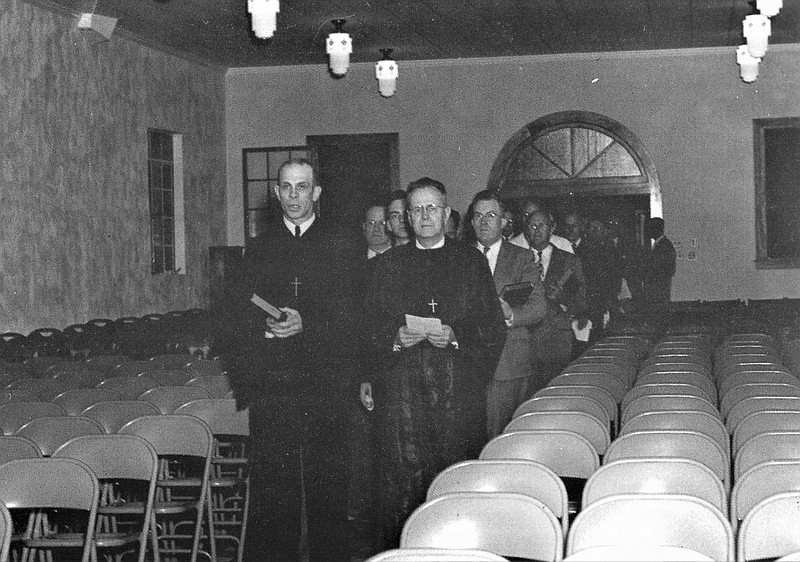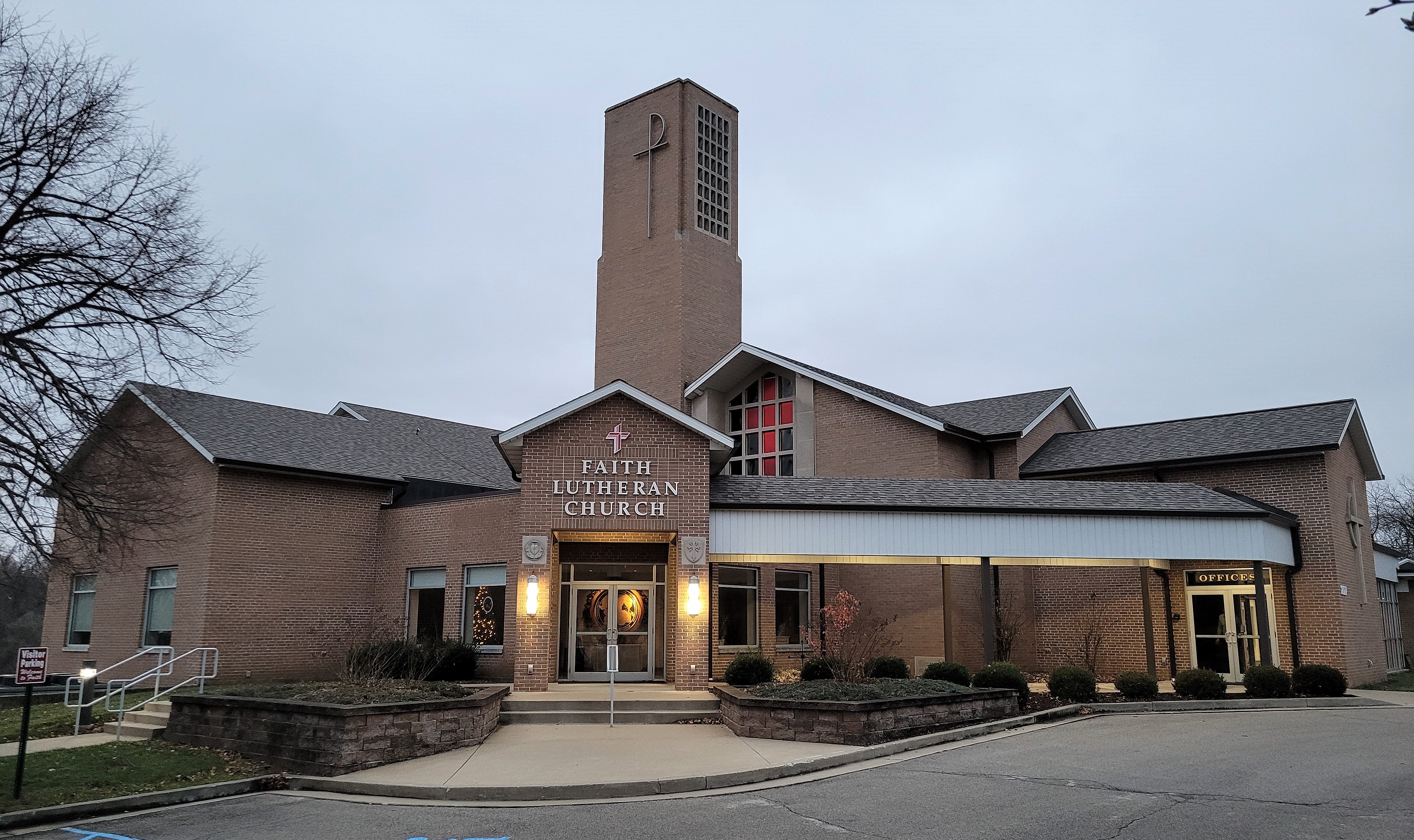In 1870, Pastor Carl Thurow, who was serving as pastor of Zion Lutheran Church, established the first Lutheran congregation in Jefferson City with the organization of Trinity Lutheran Church.
Eighty years later, following exponential growth of the church body, a new congregation known as Faith Lutheran Church was established on the west end of the city.
This newer congregation has been affiliated with the Missouri Synod-Lutheran Church since its founding and remains the youngest church of this synod in Cole County.
"In 1950, a group of members of Trinity Lutheran Church, then under the pastorate of the Rev. Alfred C. Schmalz, asked for release in order to form a new congregation," explained the 50th anniversary booklet of Faith Lutheran Church.
In 1950, Trinity Lutheran Church was located on the northwest corner of Monroe and McCarty streets. Its leadership recognized that the 51-year-old church building, limited in size and often requiring repair, could no longer sustain its massive congregation.
"Approval was granted, and Trinity gave the group $25,000 with which to begin the new mission," the booklet clarified. "At that time, Trinity numbered about 1,200 souls and 199 of these were released to begin the new congregation on April 11, 1950. Of this charter group, 145 were communicants and 54 children."
A 10-year anniversary publication said, "By popular vote, the new congregation was aptly named 'Faith' to express the group's faith in God and the future in the challenging task which lay before them."
Church records note the first congregational president of Faith Lutheran was Theodore Engelbrecht, along with Arthur Heisinger as vice president, Herbert Harfst as secretary and Harry Goldammer as treasurer.
Larry Meisel, who was 9 years old when his family became charter members of Faith Lutheran Church, recalls making the transfer from Trinity to help start the new congregation.
"The building that the church moved into had previously been the fan factory for Wren Manufacturing Company located where U.S. Bank is now on the corner of Dix Road and Industrial Drive," he said.
"We have an aerial photo showing that all that was in the area at the time was a nearby house, ballfields and farmland," he added.
While remodeling was under way to make their new church home usable, arrangements were made to conduct temporary services at nearby West School. A chapel, measuring 28 feet by 100 feet, was built in the basement of the former factory building and the dedicatory service held there June 5, 1950.
The dedicatory service for the new church was led by the Rev. E. Bultmann of Immanuel Lutheran Church in Honey Creek. On July 30, 1950, the Rev. William Wollenburg was installed as Faith's first pastor. For 11 years, Wollenburg helped bolster the growing congregation until accepting a call to St. Paul's Lutheran Church in Concordia.
By 1952, the church body of Faith had grown in size by a third and numbered 303 members, 96 of whom were children.
In 1954, a second story was added to be used as a Christian Day School for the first through eighth grades. This decision was inspired by overcrowding at Trinity's school and because many of Faith's members believed tuition being paid for their children to attend Trinity could instead be used to build and sustain their own school.
"A new sanctuary, fellowship hall, classrooms and an office wing were built on the property in 1962 but the school remained in the old factory building," said Henry Gensky, another charter member of Faith.
This construction endeavor occurred during the tenure of the Rev. Norman C. Meyer, second pastor for Faith Lutheran, who was succeed by the Rev. Arthur Graf in September of 1967. Then, in 1971, the Rev. James W. Kalthoff was installed around the time the decision was made to close the Christian school.
"The congregation decided to sell the school building and a small piece of property in 1973 to Missouri Bank," Meisel said. "The money received from that sale was used to pay off the debt of the earlier church construction and helped us begin another building project."
A new educational wing and a gymnasium were dedicated in 1976. The church continued to thrive throughout the next several years with the hiring of a director of christian education and the organization of a weekday school and pre-school.
"We went through another major building program and added an educational wing with classrooms in 2005," Meisel said. "A sound Christian education for our youth has always been a priority of the congregation from the beginning."
Several full-time and interim pastors would serve in the pulpit at Faith in the years that followed Pastor Kalthoff's departure in 1991. Through it all, the congregation embraced a steady growth in membership.
In the year 2000, the once-small congregation that had begun with the planting of 199 initial members coming from Trinity Lutheran Church, had flourished into a large congregation with more than 900 members.
As a descendant of early German immigrants to the community, Meisel recognizes that Faith does not possess the extensive historical legacy of many Lutheran churches in the area. However, despite its youth, Faith has been blessed with growth throughout the years and remains deeply involved in congregational outreach.
"One of the things I have noticed about Faith Lutheran Church, since I became a charter member in 1950, is that we are really a friendly church," he said. "And I'm not saying that there are unfriendly congregations, but here it seems like people go out of their way to introduce themselves to visitors and welcome them. We might not have the history of other churches, but I consider the congregation of Faith a close family ... and that has been part of the reason for our continued growth throughout the years."
Jeremy P. Amick is the author of the upcoming book "Moments Made on the Moreau."


